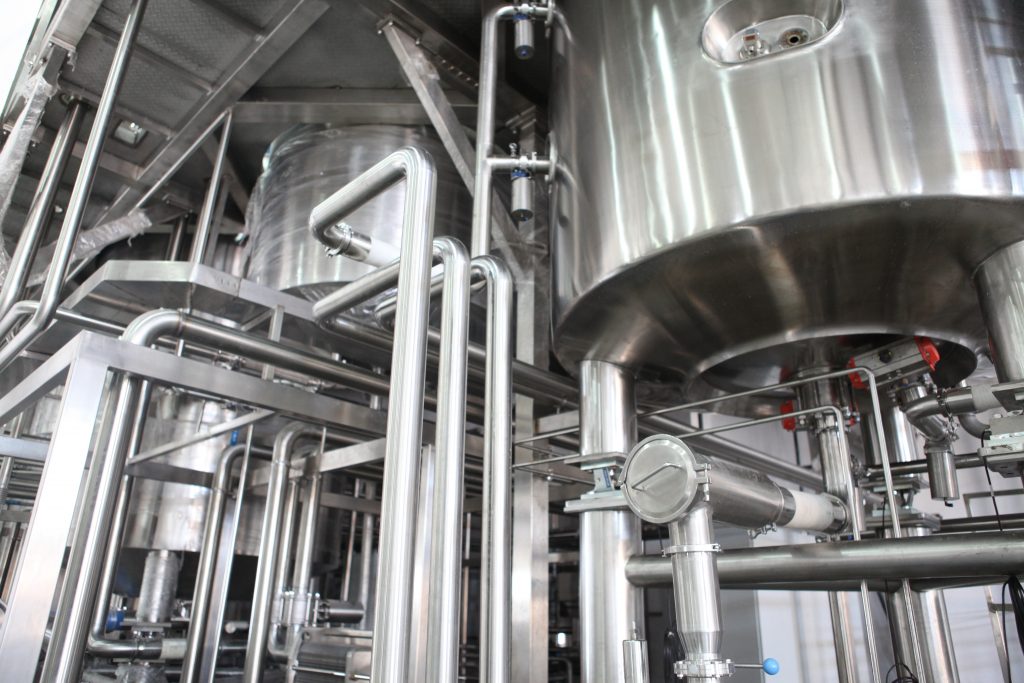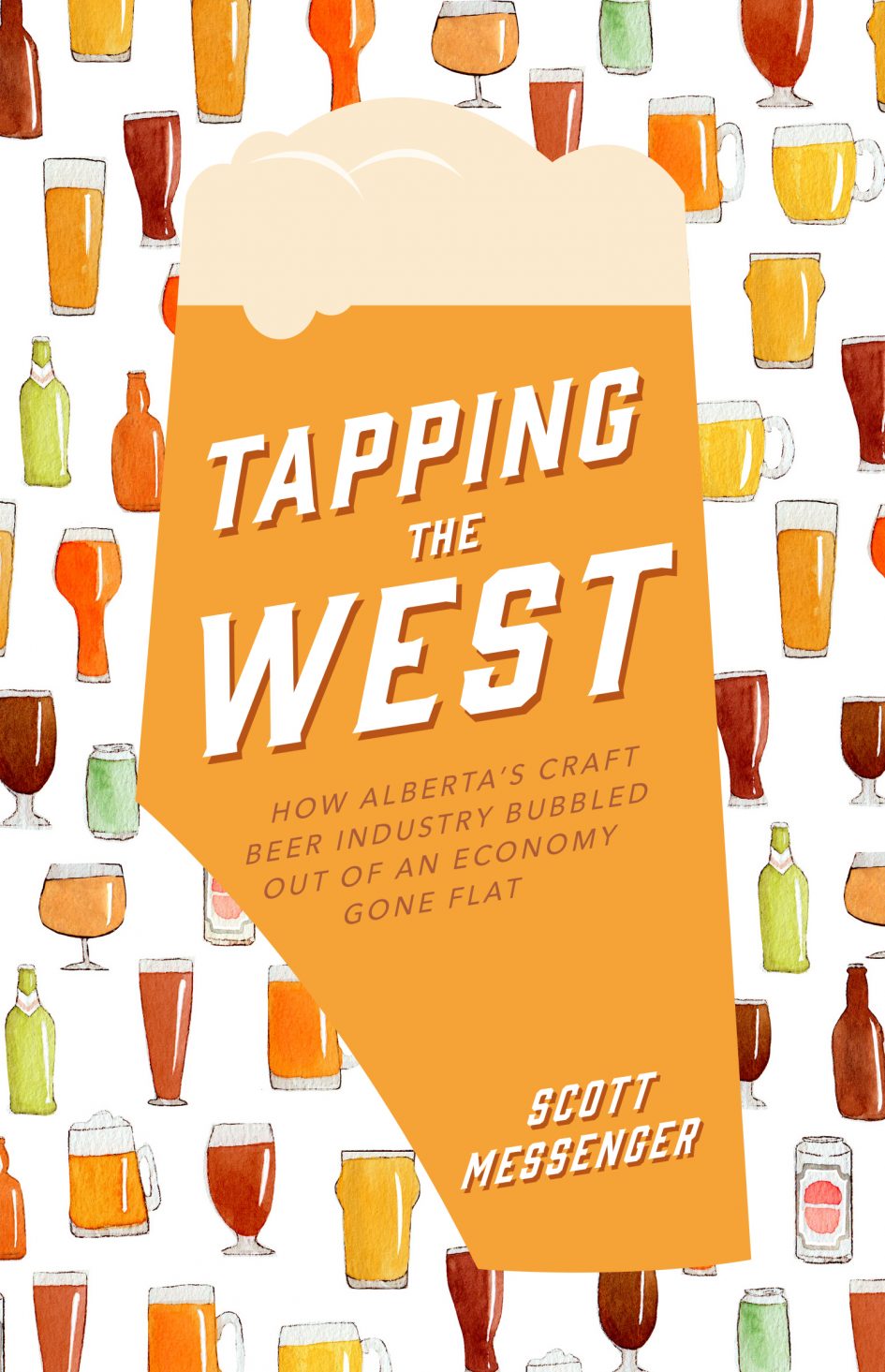Releasing a book during COVID-19 must be an author’s nightmare. No real opportunities to promote the book, no in-store sales. Only word of mouth to work with. Not ideal.
Such is the case for Scott Messenger, an Edmonton-based writer and fan of craft beer, who in April released Tapping the West: How Alberta’s Craft Beer Industry Bubbled Out of an Economy Gone Flat, a book exploring the origins and evolution of Alberta’s recent craft beer boom. For those unfamiliar, over the past five years Alberta has experienced an explosion in craft beer not seen in any other province. The speed at which the Alberta industry grew is mind blowing. Messenger attempts to chronicle this heady period.
The book is anchored by stories of the individuals and breweries that made/make up the rise of craft in the province. He starts with a brief introduction to Alberta’s pioneers – Big Rock (of course), Alley Kat, Brewsters and even failed Strathcona Brewing – but he spends most of his time delving into the experiences of the industries relative newcomers – those that opened early in the surge – and other important players in the industry, and then closing with an introduction to some of the newer players. In doing so he offers some interesting insights into what the beer industry looks like and what it takes to produce beer in this province. He follows the rise of beer after a series of policy changes that reduced barriers to small breweries, sharing their trials, successes and struggles.
The result is a breezy, enticing read that weaves an interesting narrative while offering some insights into the industry. Messenger is a skilled writer who has a knack for drawing out the personalities of his interviewees and introducing nuance in the narrative.
The book is at its strongest providing the intimate and gritty details of the life of operating a brewery. The telling of Bent Stick’s debate over the small brewery’s direction which resulted in the departure of one of the founders is, at once, intensely personal and a window into the realities of building a brewery. Dandy Brewing’s admission to how nip and tuck their financial situation has been at times is revealing and humbling. These glimpses into the complexity of brewing beer in Alberta make Tapping the West more than the usual cheerleader reference guide that often comprise this genre. It is able to rise above the hackneyed “isn’t this industry just swell, kids?” trope without losing touch with the very real sense of cooperation and camaraderie that exists in the industry.
It is interesting to read a book knowing, on a personal level, many (if not most) of the individuals profiled within it. It breeds a comforting familiarity, but also sets up a difficult standard. I have my own impression of these men and women and often found myself reflecting on how Messenger’s portrayal compared. We didn’t always align but he does a good job allowing their personalities to show through.

I found the book too frequently falls short on important historical, stylistic and technical details. I found a handful of historical inaccuracies (wrong dates, etc.) and overall felt Messenger’s descriptions of brewing process and beer styles to be a bit fuzzy. As one particularly irksome example, there is no consistency in brewery volume units – sometimes litres, sometimes hectolitres, sometimes pints – and no context for the reader of what those volumes mean in the real world. I recognize I am a tough audience for that kind of stuff, but I do think it can be a shortcoming for many readers.
More significantly, I think the book would be strengthened with more attention to the economic and political context in which this explosion took place. There are some passing references to the oil crash and some recognition of beer as an economic driver, but I think drawing a more vivid picture of Alberta’s economic woes (especially in Calgary) would anchor the reader’s sense of what kind of accomplishment the beer boom was/is. The book doesn’t fully live up to its sub-title. It is likely Messenger sees the book’s primary audience as Albertans who lived through the rough economic times and thus don’t need greater detail, and that is fair enough. But my point remains as I think it would complete the story.
Messenger and I also disagree on the role of policy in setting the stage for the boom. He fully recognizes the linchpin that was the removal of the minimum production capacity rule and gives it appropriate space in the book. However, he seems dismissive of policy changes that followed, including mark-up changes, relaxed tap room rules and increased points of sale (such as farmers’ markets). To be fair he does make a point of including alternative viewpoints about their impact, but the overall impression remains that the only significant policy was minimum capacity. I believe that is an oversimplification.
Finally, I must acknowledge that Messenger devotes some space in the book to me and this website, my role in the early days of the industry and my co-creation of the Alberta Beer Awards. His description is flattering and very generous. That might tempt one to be a little more gentle reviewing the book, but I am pretty certain Messenger wouldn’t want me to pull any punches just because he said nice things about me in the book. So I haven’t.
In the end I think I can say unreservedly that this book belongs on the shelf of any person interested in craft beer in western Canada. It will serve in the years to come as a reliable record of how Alberta’s beer industry came of age in the early 21st century.


Leave a Reply